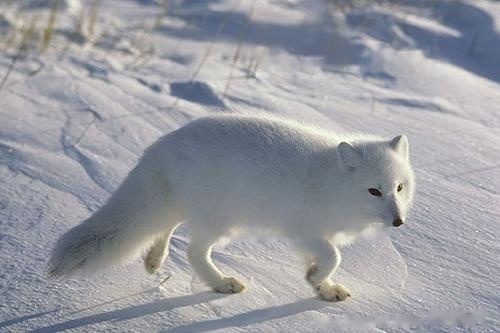Pets must be fed and managed. What is the food of Arctic fox? How should we feed it? Does it have the habit of migration? What are its classifications? Breed? Only by knowing clearly, can better feeding!

Arctic Fox
Food
The Arctic fox's diet includes lemmings, fish, birds, eggs, berries, and arctic rabbits, and sometimes roams Shores catch shellfish, but the main food supply comes from lemmings. When encountering a lemming, the arctic fox jumps up with great accuracy, then swoops in, pinning the lemming to the ground and devouring it. Interestingly, when the arctic fox smells the smell of the lemmings in the nest and hears the screams of the lemmings, it will quickly dig the lemming nest under the snow, and when it is almost done, the arctic fox will suddenly Jumping high, with the strength of the jump, the rat nest made of snow was crushed with the legs, and the litter of lemmings was wiped out and eaten one by one. In extreme starvation, arctic foxes will attack each other.
Migration
Arctic foxes can migrate long distances and are very good at navigating. Arctic foxes migrate 4,600 kilometers in five and a half months. On average, it can travel 90 kilometers a day and can travel for several days. Able to migrate from the Pacific coast to the Atlantic coast in a matter of months, traveling as close to the east-west distance of Canada. Arctic foxes are able to navigate hundreds of kilometers. They leave their dens in winter, migrate 600 kilometers away, and return home the following summer.
Groups
In a group of foxes, there is a strict hierarchy among the vixens, and one of them dominates the others. In addition, members of the same group share the same territory. If these territories must be adjacent to adjacent groups, they rarely overlap, indicating that foxes have a certain territoriality. The number of arctic foxes fluctuates with the number of lemmings. Usually, the low-peak year when a large number of lemmings die is the peak year of the number of arctic foxes. The foxes will inexplicably spread a disease mad dance. This disease is caused by the virus invading the nervous system. The sick arctic fox will become extremely excited and excited, often unable to control itself, rushing around, and even dare to attack passing dogs and wolves. Most of the sick people died in the first winter, with as many as 2 corpses per square kilometer, and local hunters often took their fur from fox corpses.
![[Dog Training 5] The training method of pet dog dining etiquette](/static/img/12192/12192_1.jpg)




